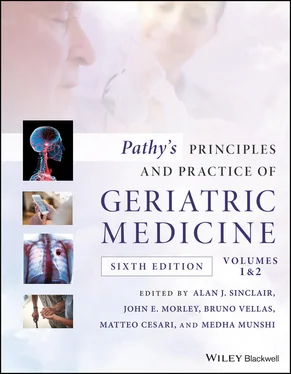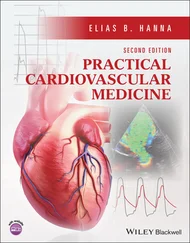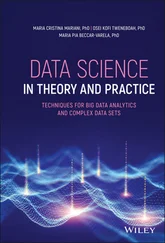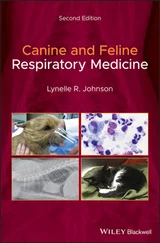Pathy's Principles and Practice of Geriatric Medicine
Здесь есть возможность читать онлайн «Pathy's Principles and Practice of Geriatric Medicine» — ознакомительный отрывок электронной книги совершенно бесплатно, а после прочтения отрывка купить полную версию. В некоторых случаях можно слушать аудио, скачать через торрент в формате fb2 и присутствует краткое содержание. Жанр: unrecognised, на английском языке. Описание произведения, (предисловие) а так же отзывы посетителей доступны на портале библиотеки ЛибКат.
- Название:Pathy's Principles and Practice of Geriatric Medicine
- Автор:
- Жанр:
- Год:неизвестен
- ISBN:нет данных
- Рейтинг книги:3 / 5. Голосов: 1
-
Избранное:Добавить в избранное
- Отзывы:
-
Ваша оценка:
- 60
- 1
- 2
- 3
- 4
- 5
Pathy's Principles and Practice of Geriatric Medicine: краткое содержание, описание и аннотация
Предлагаем к чтению аннотацию, описание, краткое содержание или предисловие (зависит от того, что написал сам автор книги «Pathy's Principles and Practice of Geriatric Medicine»). Если вы не нашли необходимую информацию о книге — напишите в комментариях, мы постараемся отыскать её.
Pathy’s Principles and Practice of Geriatric Medicine
Pathy's Principles and Practice of Geriatric Medicine — читать онлайн ознакомительный отрывок
Ниже представлен текст книги, разбитый по страницам. Система сохранения места последней прочитанной страницы, позволяет с удобством читать онлайн бесплатно книгу «Pathy's Principles and Practice of Geriatric Medicine», без необходимости каждый раз заново искать на чём Вы остановились. Поставьте закладку, и сможете в любой момент перейти на страницу, на которой закончили чтение.
Интервал:
Закладка:
Despite significant ongoing advances in efficacy and tolerability of treatment approaches, many patients with pancreatic adenocarcinoma, including those who could be curable, are not referred for multidisciplinary oncologic evaluation. In general, our recommendation is that even in the elderly or chronically ill patient who may decline treatment, a formal consultation with an oncology team is important to ensure that patients and families are aware of all treatment options, ranging from potentially curative to palliative.
Key points
Although pancreatic morphological change occurs in the elderly, it may not correlate with pancreatic dysfunction.
Acute pancreatitis associated with gallstone disease is the commonest cause of acute pancreatitis in the elderly.
Pancreatic cysts are found incidentally in up to 40% of cross‐sectional imaging scans, and referral to gastroenterology is reasonable for cysts >1 cm in size.
Pancreatic cancer remains a challenging condition to treat, but treatment options are expanding rapidly, and elderly patients should be offered formal oncologic consultation.
References
1 1. Laugier R, Sarles H. The pancreas. Clin Gastroenterol. 1985; 14:749–56.
2 2. Gapp J, Hall AG, Walters RW, Jahann D, Kassim T, Reddymasu S. Trends and outcomes of hospitalizations related to acute pancreatitis: Epidemiology from 2001 to 2014 in the United States. Pancreas. 2019; 48(4): 548–54.
3 3. Lankisch PG, Droge M, Gotteslaben F. Drug induced acute pancreatitis: incidence and severity. Gut. 1995; 37:565–7.
4 4. Chari ST, Smyrk TC, Levy MJ, et al. Diagnosis of autoimmune pancreatitis: the Mayo Clinic experience. Clin Gastroenterol Hepatol. 2006; 4:1010–6.
5 5. Sah RP, Dawra RK, Saluja AK. New insights into the pathogenesis of pancreatitis. Current Expert Rev Gastroenterol Hepatol. Opinion Gastroenterology. 2013; 29(5):523–30.
6 6. Skouras C, Hayes AJ, Williams L, et al. Early organ dysfunction affects long‐term survival in acute pancreatitis patients. HPB (Oxford). 2014; 16(9):789–96.
7 7. Ranson JHC, Rifkind KM, Roscs DF, et al. Objective early identification of severe acute pancreatitis. Am J Gastroenterol. 1974; 51:443–51.
8 8. Blamey SL, Imrie CW, O’Neil J, et al. Prognostic factors in acute pancreatitis. Gut. 1984; 25:1340–6.
9 9. Papachristou GI, Muddana V, Yadav D, et al. Comparison of BISAP, Ranson’s, APACHE‐II, and CTSI scores in predicting organ failure, complications, and mortality in acute pancreatitis. Am J Gastroenterol. 2010; 105(2):435–41.
10 10. Balthazar EJ. Acute pancreatitis: assessment of severity with clinical and CT evaluation. Radiology. 2002; 223:603–13.
11 11. Bakker OJ, van Brunschot S, vanSantvoort HC, Dutch Pancreatitis Study Group, et al. Early versus on‐demand nasoenteric tube feeding in acute pancreatitis. N Engl J Med. 2014; 371(21):1983–93.
12 12. Lodewijkx PJ, Besselink MG, Witteman BJ, et al. Nutrition in acute pancreatitis: a critical review. Review Expert Rev Gastroenterol Hepatol. 2016; 10(5):571–80.
13 13. Barrie J1, Jamdar S1, Smith N, et al. Misuse of antibiotics in acute pancreatitis: Insights from the United Kingdom’s National Confidential Enquiry into patient outcome and death (NCEPOD) survey of acute pancreatitis. Pancreatology. 2018 Oct; 18(7):721–726.
14 14. da Costa DW, Bouwense SA, Schepers NJ, et al. Same‐admission versus interval cholecystectomy for mild gallstone pancreatitis (PONCHO): a multicentre randomised controlled trial. Lancet. 2015; 386(1000):1261–1268.
15 15. Steer ML, Wasman J, Freedman S. Chronic pancreatitis. N Engl J Med. 1995; 332:1482–90.
16 16. Machicado JD, Yadav D. Epidemiology of recurrent acute and chronic pancreatitis: similarities and differences. Dig Dis Sci. 2017 Jul; 62(7):1683–1691.
17 17. Layer P, Yamamoto H, Kalthoff L, Clain JE, Bakken LJ, DiMagno EP. The different courses of early‐ and late‐onset idiopathic and alcoholic chronic pancreatitis. Gastroenterology. 1994; 107(5):1481–7.
18 18. Sperti C, Moletta L. Staging chronic pancreatitis with exocrine function tests: Are we better? World J Gastroenterol. 2017 Oct 14; 23(38):6927–6930.
19 19. Holt PR. Intestinal malabsorption in the elderly. Dig Dis. 2007; 25:144–50.
20 20. Sanyal R, Stevens T, Novak E, Veniero JC. Secretin‐enhanced MRCP: review of technique and application with proposal for quantification of exocrine function. AJR Am J Roentgenol. 2012 Jan; 198(1):124–32.
21 21. Megibow AJ, Baker ME, Morgan DE. Management of incidental pancreatic cysts: a white paper of the ACR Incidental Findings Committee. J Am Coll Radiol. 2017 Jul; 14(7):911–923.
22 22. Turaga KK, Kvois LK. Recent progress in the understanding, diagnosis and treatment of gastroenteropancreatic neuroendocrine tumors. Cancer J. 2011; 61:113–32.
23 23. Siegel RL, Miller KD, Jemal A. Cancer statistics 2019. CA Cancer J Clin. 2019; 69(1):7.
24 24. Salgado M, Arévalo S, Hernando O. Management of unresectable, locally advanced pancreatic adenocarcinoma. Clinical Transl Onco. 2018; 20(2):113–118.
CHAPTER 22 Anaemia in older people
Angela M. Sanford
Division of Geriatrics, Saint Louis University School of Medicine, St Louis, Missouri, USA
Background
In 1968, the World Health Organization (WHO) formally established the definition of anaemia. It was categorized as a haemoglobin level less than 13 g/dL in men and less than 12 g/dL in women. 1The normal haemoglobin range is adjusted for children, pregnancy, gender, smokers, and those who live at higher altitudes, but there have yet to be any large studies specifically focused on normal haemoglobin values in older people. Additionally, the original cohort used to establish the normal values of haemoglobin at the population level excluded elderly patients, and thus controversy exists regarding normal values for older people. A natural decline in haemoglobin levels in older adults is accepted, but at this time, it is not clear if this happens due to the ageing process, underlying chronic disease, or some other unknown cause. While the absolute value of haemoglobin is important when considering if someone is anaemic, it is also important to take into account the trend of haemoglobin in an individual and whether there has been a substantial change from previous values.
Anaemia in older people is often underdiagnosed and undertreated despite being associated with increased morbidity and poor quality of life in older adults. 2Older people with anaemia have been found to have added impairments in activities of daily living and functional status, 3increased weakness and fatigue, 4and higher rates of frailty, 5cognitive decline, 6depression, 3and fractures. 7In addition, hospitalized older adults with anaemia have longer lengths of stay and increased readmission rates. 8,9While anaemia is very common in those with advanced age, it is not considered a normal aspect of ageing, and older adults with anaemia should undergo a workup to evaluate the cause of anaemia and establish a diagnosis. Once a diagnosis is established, a treatment plan can be implemented. Treatment of anaemia typically requires a multi‐faceted plan. Resolution may be difficult to achieve – particularly if the anaemia is due to underlying chronic inflammation and disease.
Anaemia is typically classified by either underlying aetiology 10or morphology and size of red blood cells (RBCs) as determined by the mean‐corpuscular volume (MCV) of haemoglobin. If classified by aetiology, typical groupings consist of impaired production of RBCs (nutritional deficiencies, chronic inflammation, and clonal disorders), acute loss of RBCs (bleeding), accelerated RBC destruction (haemolytic and sickle cell anaemia), and ‘unexplained’ anaemia ( Figure 22.1). If classified by morphology, the MCV of RBCs is used, and classifications include microcytic, normocytic, and macrocytic anaemias. It is more common to use the classification system relying on underlying aetiology and important to recognize that the MCV often does not reflect the underlying anaemia pathogenesis. For example, in vitamin B12 deficiency anaemia, RBCs may be either normocytic or macrocytic, but it is commonly thought of as a purely macrocytic anaemia. In nutritional deficiencies, MCV is frequently in the normal range, particularly early in the disease course, and can also be normal when multiple diseases are present concurrently, making it less useful for establishing an aetiology.
Читать дальшеИнтервал:
Закладка:
Похожие книги на «Pathy's Principles and Practice of Geriatric Medicine»
Представляем Вашему вниманию похожие книги на «Pathy's Principles and Practice of Geriatric Medicine» списком для выбора. Мы отобрали схожую по названию и смыслу литературу в надежде предоставить читателям больше вариантов отыскать новые, интересные, ещё непрочитанные произведения.
Обсуждение, отзывы о книге «Pathy's Principles and Practice of Geriatric Medicine» и просто собственные мнения читателей. Оставьте ваши комментарии, напишите, что Вы думаете о произведении, его смысле или главных героях. Укажите что конкретно понравилось, а что нет, и почему Вы так считаете.












